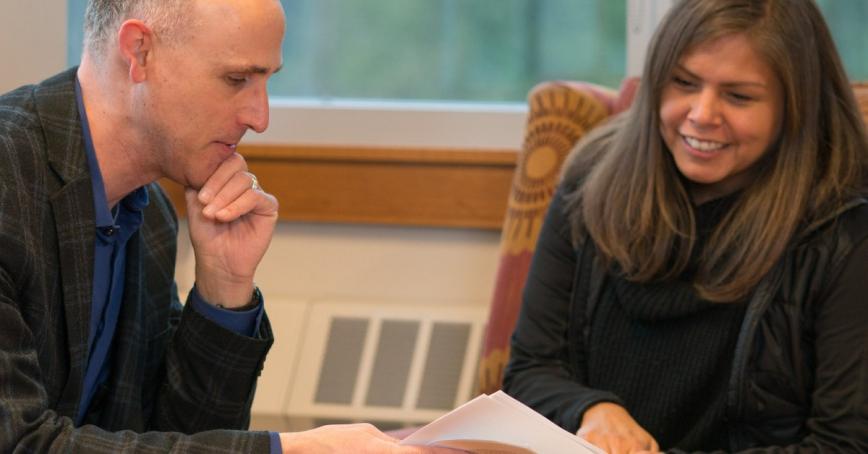Two-Way Roads: Reconciliation and Research

“It's got to be a two-way road,” explains Asma-na-hi Antoine, Royal Roads’ Director of Indigenous Engagement, speaking to the process of Indigenous and non-Indigenous people working together to become stronger allies, and of the spirit of friendship and desire for deeper mutual understanding on which her participation in recent research was based. “My hope is always building stronger non-Indigenous and Indigenous allies. How can I be a better ally? How can I better understand the Western lens and perspectives?”
That theme runs strongly through two recently published articles from Royal Roads Associate Professor of Communication and Culture Geo Takach. He describes this work as efforts towards “conciliation”—which does not presuppose a prior state of conciliation that requires “reconciliation”— and situates his research at the intersections of environmental communication, Indigenous thinking and arts-based research. An article in conventional scholarly format published in the current Journal of Canadian Studies and arts-based research in the form of a script for a radio play published recently in the journal Qualitative Inquiry came to fruition from a collaboration between Takach and Antoine.
“This research asks how can we interweave Indigenous and non-Indigenous or settler thinking in service of environmental protection in the course of a major threat to the environment, resource-extraction projects?” Takach says.
The process of blending these two schools of thought was achieved in both pieces of research. Takach integrates the content of his conversations with Antoine into his project.
“I quote her as a scholarly source in the mainstream qualitative-research publication, but, this is another beauty of arts-based research: Asma-na-hi enters the broadcast booth in the radio play and speaks in her own voice. I feel so blessed to have her collaboration and also her consent to repeat her wisdom in the script.”
Antoine and Takach collaborated with a view to improved and sustainable allyship.
“Building relations between Indigenous and non-Indigenous [people] is an ongoing, sustainable practice that cannot be just a one-off,” says Antoine. “If you're going to do Indigenous research, if you're going to engage in Indigenous education, it's an ongoing building of relations and learning from each other.” Antoine says her experience contributing to this research was that value was upheld and Takach came to the table open to learning and with a spirit of friendship, just as she did.
What Antoine and Takach share is a deep desire for Indigenous and non-Indigenous people coming together and to challenge the way we think about reconciliation, in that there needs to be a coming together, or conciliation, before there can be a reconciliation.
“Some of the connections in the middle are interwoven together and then those on the outside are either the Western and the Indigenous ways or practices, lenses or perspectives; they don't always have to interconnect,” says Antoine.
“I hope people will see things in a different way. And I hope people will foreground in their consciousness that we have in our power the ability to rise up above the paralyzing, debilitating and demoralizing status quo; that if there are things we feel aren't right, maybe we can try to change them, even in a small way, starting with one-on-one conversations with people in our spheres of influence,” says Takach.